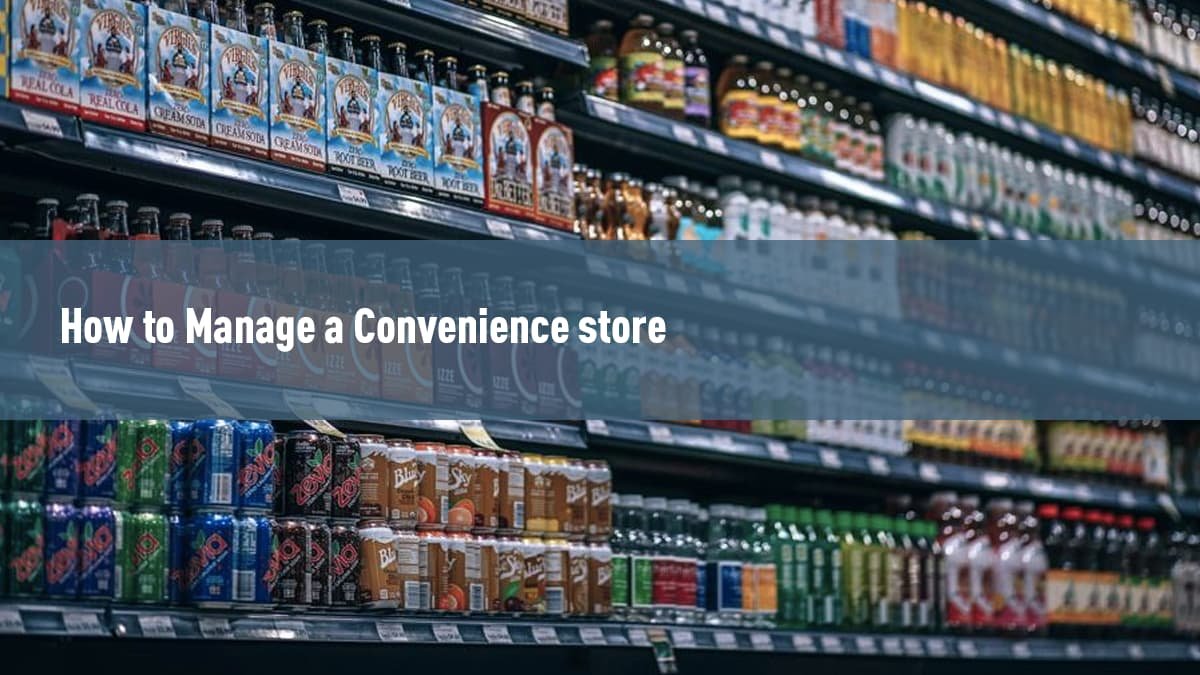
How to Manage a Convenience store
A grocery shop, convenience store, or corner store is a small supermarket that sells a range of daily goods such as coffee, supermarket, snack, confectionery, soft drinks, tobacco products, over-the-counter drugs, toiletries, newspapers, and magazines. Convenience stores are allowed to sell alcohol in some jurisdictions, but many other jurisdictions restrict other drinks to those with relatively low alcoholic content, such as beer and wine. These stores can also provide money order and wire transfer services, for a small per-copy fee, along with the use of a fax machine or photocopier. Some, like the OPUS card in Montreal, often promise to sell tickets or to reload a smart card.
The primary aim of a convenience store is to give more of their time to clients what they really desire most. Convenience stores do exactly that by providing various services and goods under the same roof. Consumers are willing to pay big bucks for a few extra minutes in our fast-paced world. Place is important as comfort is the name of the game.
The potential for consistent success in several locations, servicing many styles of clients, is one of the big advantages corner stores enjoy. In shopping at a convenience store, the suburban mom, the blue-collar and white-collar worker, and the Millennial can each find value-the need for fast and easy shopping is universal. That being said, you need to understand that your performance will be affected by the location. Being visible and available is crucial. In terms of the number of passers-by you will attract, you will want to make an educated decision about your venue.
Be a professional on what you deliver

If you are an "all-in-one" supplier, it is important to recognise that both direct and indirect rivals are faced with a high volume. Some corner stores are your main competitors and your secondary competitors are specialty stores, such as grocery stores, liquor stores, and others. Know that all of them are battling over the same slice of pie. Make sure that a seamless environment and excellent customer service can be provided, whether in gas service and rates or your ready-made food range. This is profoundly connected to the importance of investment in capital.
To start and help all projects for the services and goods you want to deliver, you need to have the necessary funds. It's better not to provide a service at all at the end of the day, than to provide a service and perform it poorly.
Do not make the error of spreading yourself too thin if you're getting into the convenience store market. It is difficult to try to be anything to everyone. Know your boundaries, test the waters, and build up your shop and your offers a little at a time, if anything. You will know what goods and services you can sell until you decide who your primary customers will be. There could be different ideas for the suburban family and the metropolitan businessman about what comfort means to them and you will have to pick the products accordingly.
Work with your suppliers

Your bread and butter are your vendors. Not only are you relying on their goods, but on their support as well. Piggyback off their attempts and marketing assets because their success is, in fact, your success. Ask for in-store materials you can endorse, future promotions or other public relations campaigns. Your own reputation is created by a client associating you with a brand they already know and trust. It would also strengthen your partnership with the supplier, making it smooth and efficient for your partnership.
Use the consumer buying process to your advantage
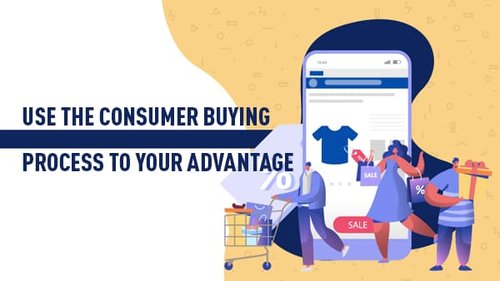
A convenience store is built to provide consumers easily and in one location with the ability to venture through the purchasing decision process. For company owners, this is a major benefit. In the average three to four minutes they are in your shop, a customer will be able to search for data, analyse alternatives, make a decision, and actually buy everything. You might also be able to spark the first stage in the process: identification of problems.
Forty-five percent of fuel-buying customers end up buying a soda, and 36 percent go to the store to buy food. Capitalize on these last-minute sales by providing a range of "comfortable" goods within the scope of an arm.
Be updated with the industry trend

The essence of becoming a corner store owner is listening to the needs and wishes of your customers. You not only have to give them the intangible advantages of time and ease, but also concrete advantages. Be aware of their lifestyle changes and emerging trends that they are pursuing. Americans are more health conscious than ever, for instance. Instead of only hot dogs and frozen burritos, for example, work this into your company by adding wholesome labels or providing pre-made balanced food choices.
What to Consider When Opening a C-store

Owning your own business is hard work. Convenience store management is no different. There is plenty to think about before diving into the business. Here are a few things to consider:
- Location: Your position is one of the major considerations for any brick and mortar company. Convenience outlets are no different. Although you might be tempted to consider only the physical space your store would occupy when you think of "place," Although this is significant, your operational area's specific problems often warrant consideration. Along with the existence of any competition, traffic and accessibility are key factors. This could be a positive indication that there is a potential for your company to succeed if there is not a lot of competition in the region. Too much competition in the region, on the other hand, can mean there aren't enough clients to go around.
- Develop a Business Plan: Irrespective of whether you are opening your company as a sole owner or as part of a franchise, a convenience store business plan is 100% essential. If you're a franchise, there will be variations. For example, your marketing, branding and even your suppliers will already be predetermined. You're going to have more flexibility to run as a standalone store. In any case, a business plan helps to keep the business structure structured. It also details the growth and development strategies, financial support, and the responsibilities of all those involved. No matter what business you do, preparing your business plan is a crucial move.
- Inventory Tracking and Management: If you're a stand-alone convenience store, it's clear that the majority of your money is going to come in for the selling of items. If you are a gas station with an attached shop, you can be shocked to find that the majority of your income often comes from in-store transactions rather than gas sales. Proper inventory management and control will help drive the profitability. It will also help uncover trends and recognise the most successful products in your shop.
- Convenience Store Management: While many people consider convenience stores and gas stations to be companies that "run on their own," the fact is that there is a lot of work involved at the management and staff levels. Because most consumers expect these stores to be open 24 hours a day, you will need to be on duty around the clock. If you're thinking of getting a full time, the staff around the clock will give you a break, relax. Although payroll and labour costs may be more than the typical retail store, the gas station / service store model is a lucrative one.
Opening a convenience store is a great investment in financial and professional stability. There's a lot of hard work ahead, but the best, most profitable businesses are never free! There are several keys to the efficient management of convenience stores.
How to Manage Inventory at a Convenience Store
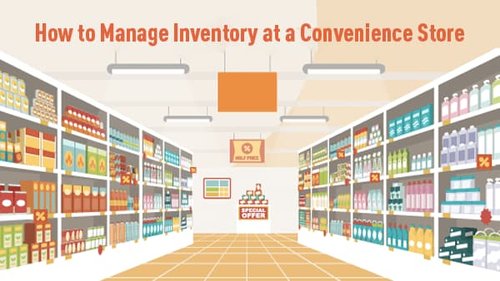
Purchasing, storing and selling products are the most important business processes for a convenience store. Managers should enforce effective internal controls and inventory procedures to improve these processes. Better inventory means faster inventory turnover rates, less spoilage and higher financial margins.
- Choose a system: Depending on the size of the convenience store, you can want a periodic inventory system or a permanent inventory check system. A perpetual system ensures that any time an item is sold, you reduce inventory. It includes the inventory of bar coding and the introduction of an electronic point of sale system. It's more effective and more reliable, but it's also costly to implement. Smaller convenience stores with lower volume sales can use a periodic cost savings method. They're not going to have to buy costly computer devices, but they're going to have to count inventory on a periodic basis, which can take longer.
- Forecast Needs: Since convenience stores are selling perishable goods, their owners need to be experts in predicting demand and in the inventory of purchases. Over-purchasing ensures that inventory becomes outdated or spoiled; under-purchasing pushes consumers away if they can not satisfy their needs. While it seems convenient to allow employees to place orders whenever appropriate, owners should take care of the buying process. Require employees to complete a purchase request and only allow managers to place orders. Managers will evaluate past data and determine patterns in the market to ensure that the correct items are stored in the required quantity.
- Control Vendors: Grocery stores have relatively small sales revenue margins, so it is crucial to control inventory costs. The chosen vendor and supplier list is a significant step in keeping costs down and preventing fraud. Managers can request price quotes from various local suppliers for a common inventory. The convenience store may be able to offer discounts by agreeing to purchase all of a particular commodity from a single source. After the most reliable and cost-effective vendors have been found, the owner can draw up a preferred list of vendors for various items and enable managers to use approved vendors. Without an approved vendor control, managers may defraud the business by selling a high-priced vendor for kickbacks.
- Inventory Environment: Make sure the inventory climate encourages quality and prolongs product life. Convenience stores must be able to stock refrigerated, frozen and shelf-stable items. Storage units should be fitted with thermometers to hold products at maximum temperature and to improve product quality. Employees need to be able to replenish frozen and cooled food while reducing exposure to room-temperature conditions. It allows store staff to quickly repurchase inventories when the boxes are clearly numbered with the mark facing outward.
Features of a POS system for Convenience Store
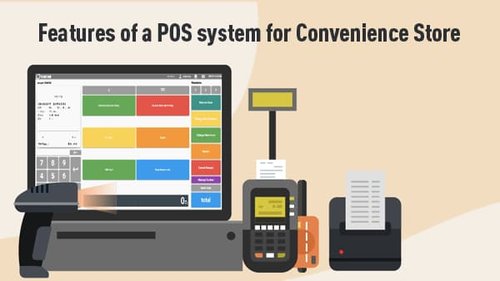
In order to survive, a convenience store must rely on rigorous POS inventory management. After all, c-store customers shop there for fast service, a wide variety of items, and a packed inventory. It is doubtful that about a quarter and a half of the customers would return to the retail store in which they were presented with a product that was out of stock.
Depending on the size of your company, that could mean thousands or even millions of dollars a year of lost sales. This means that proper inventory management for convenience stores is of the utmost importance. Luckily, the point-of - sale system will help you change this.
- Advanced Reporting – ABC Analytics: POS applications should have advanced inventory monitoring features like this. Using sales history and basic product details, ABC analytics classifies each item in your store by its importance to your company, giving it a grade of A, B or C. This gives you more actionable data to help you order, store promotions, and shop layouts in your convenience store.
- Reorder Level Optimization and Min/Max Levels: Your convenience store vending app can also assist with your ordering procedures. Smart reporting helps you to set the par level of each commodity so that buying is automatic. These systems often take into account the expected delivery times so that the inventory is still up to date. Even better, your POS can suggest the minimum and maximum par levels for you. Through evaluating past order and sales background, the point of sale will forecast optimum levels for each of your goods in the future. These can also be manually modified if needed.
- Create Stock Order Cycles and Automatic Ordering: Recurrent order cycles for each individual product may also be generated by a broad point of sale solution. Again, these can be changed manually, but the programme detects the order pattern and automatically demands a new order according to the loop. When implemented, your POS will be finished completely.
- Best and Worst Seller Notification: It's optimal to have a system that can easily classify the best and worst performers. It takes the guessing out of the equation and helps to guarantee full income. As a convenience store owner, it also helps you recognise products that might need to be changed. Since you need to buy so many different items, you don't have the luxury of carrying so many different brands. So when you're not selling well. It could be a tip-off to try a different brand for that product.
- Real-Time Inventory Management: Through your cloud-based POS solution, all inventory updates are made immediately upon purchasing, shipping, selling, or returning. This means that your inventory count is correct and that you are never out of stock.
Benefits of Adding POS Software to Your Convenience Store
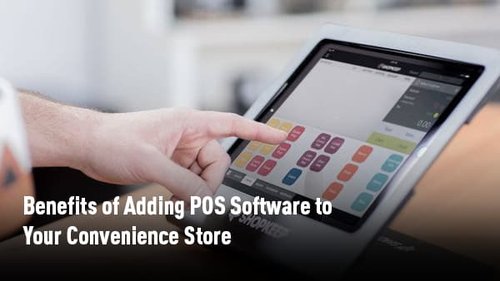
Like several other retail sectors, convenience stores that are competitive make data-driven decisions and monitor product sales mix with the use of robust convenience store management software solutions. Integral to these software packages is a powerful convenience store POS framework that incorporates sales data from registers into inventory management systems. This data and analytics interplay in an efficient POS convenience store offers a range of advantages for your activity.
- Faster Speed of Service: Modern convenience store POS systems are based around the ability to process consumer transactions easily and rapidly, with a focus on "rapidly." With a newer point of sale system in place, workers can take care of more customers quicker. Over time, owners can see improved revenue and increased customer traffic, as word of mouth spreads about quick and easy shopping experience.
- Employee Retention and Satisfaction: Retail turnover is influenced by a variety of factors, including dissatisfaction with obsolete software and hardware. In order to provide the customers with quick and convenient service, employees must have the tools at their disposal to do so. Upgrade to a new hardware sales point convenience store backed by a new hardware infrastructure.
- Customer Loyalty Program Integration: Successful business owners realise the value of being able to reach consumers through digital media outside their four walls and encourage customers to return. Well-designed convenience store management software packages allow integration with digital application-based loyalty systems, making it easier to carry out data-driven marketing campaigns and promotions, and to monitor the effectiveness of such systems.
- Improved Accuracy of Inventory, Sales Data, and Pricing: Convenience stores face the unique difficulty of trying to handle a very complex variety of goods and services. With numerous suppliers continuously changing the cost of products, it is important that convenience store owners be able to monitor product prices rapidly and have an accurate understanding of the product sales mix in order to make educated inventory management decisions that best meet business needs. When consumers can join your establishment, find the commodity they're looking for reliably, and know what it's going to cost them, they're going to trust your ability to genuinely deliver the convenience they're looking for over time.
Integrating strategies that improve employee and consumer engagement through inventory and point of sale productivity ensures that you are better able to assess your activity and make informed decisions that support your vision.
Build on the benefits of Performance Programs and the company's variety of tech solutions and bring the benefits of a successful POS software convenience store solution to your business today, ensure that your business maintains a healthy relationship with employees and customers, and exploit automation and productivity to optimise your bottom line.
Let's start with the simple way to create a website

Interested in Domitos? Get the Features Guide Today!
Domitos, is world's most sought after facility Management System and we look forward to work with. Digitize your facilities today!